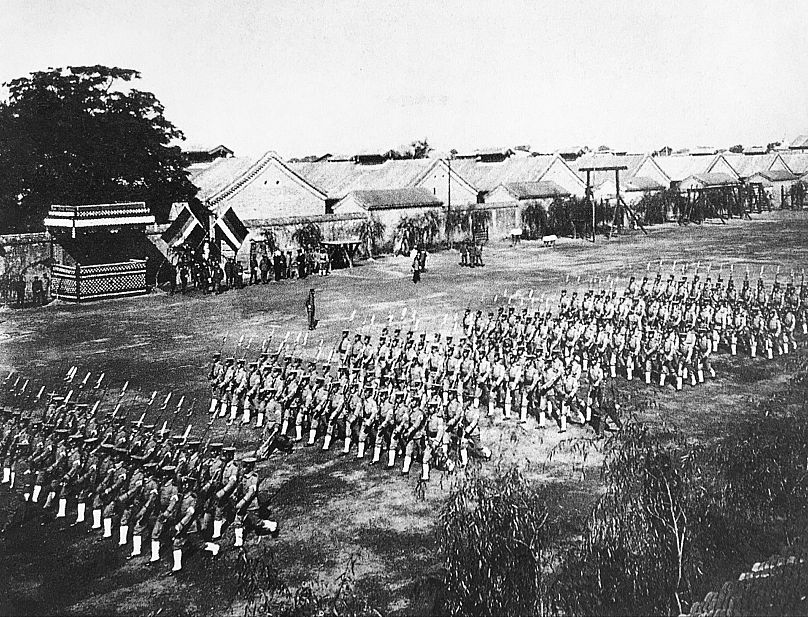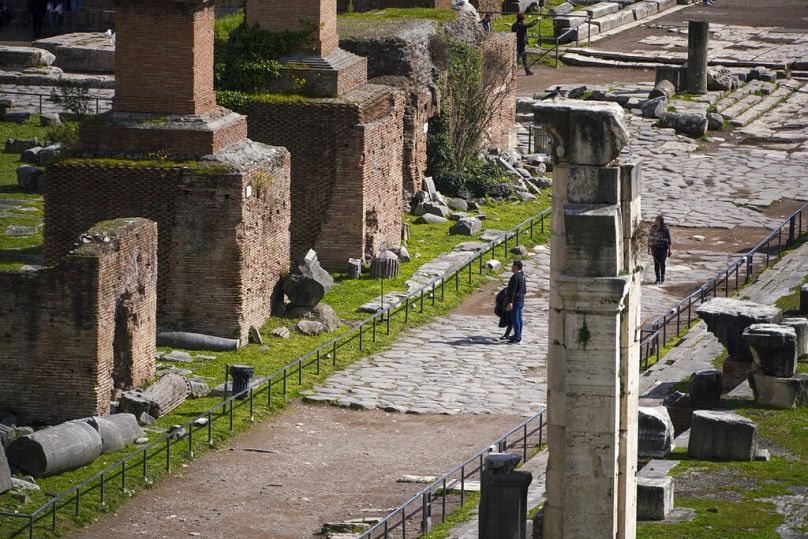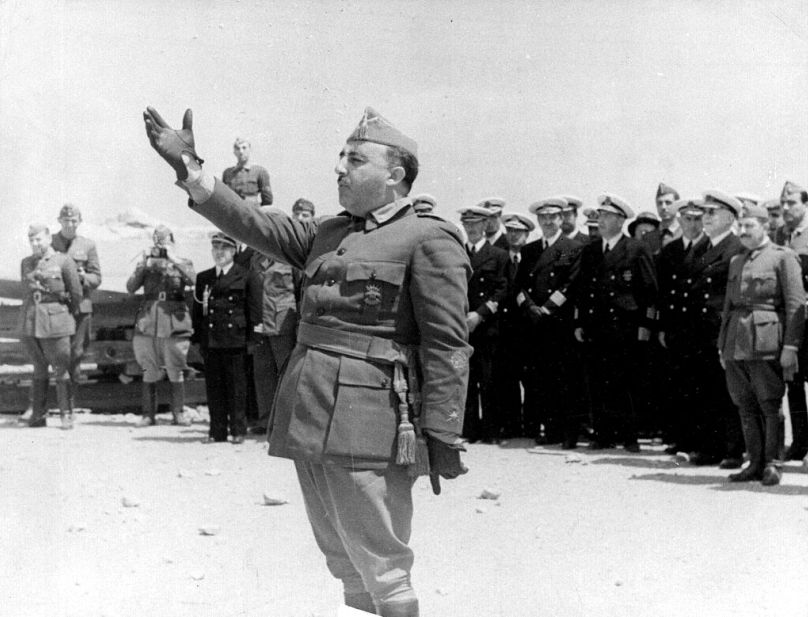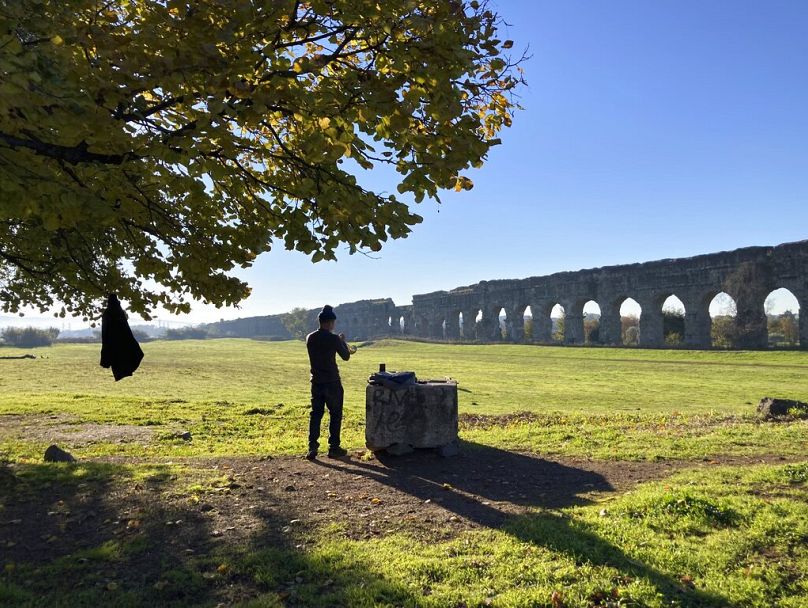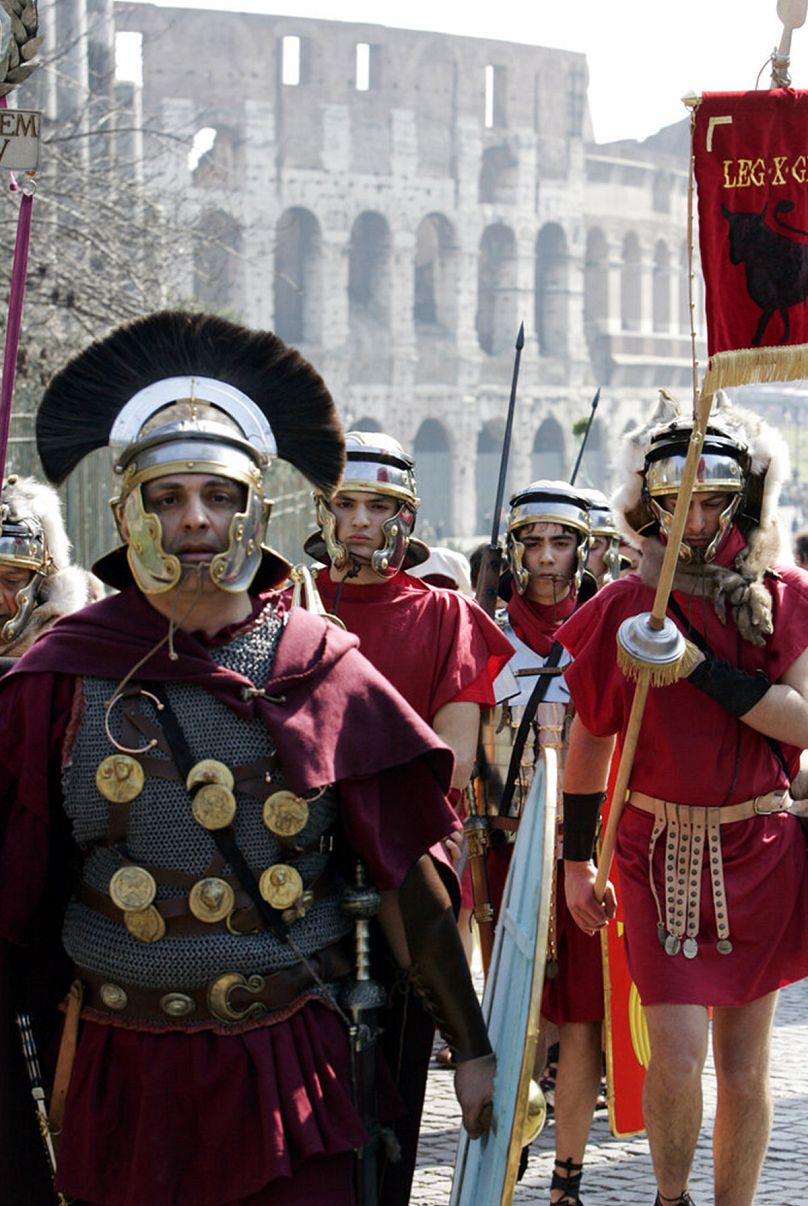Vladimir Putin’s Russia is losing its monopoly on violence, and thus is at risk of becoming a failed state, if it is not one already, Dr Jeroen W.P. Wijnendaele writes.
On Wednesday, it was announced that a plane carrying Yevgeny Prigozhin, leader of the Wagner mercenary group, had crashed.
While his death has still not been confirmed, it would be an unsurprising end for a man often labelled as Russia's most prominent warlord who had dared stage a mutiny against Vladimir Putin in the midst of the ongoing war against Ukraine.
Earlier in July, Prigozhin shocked the Kremlin and the world after he captured Rostov-on-Don and staged a march on Moscow, and it wasn't long before his mutiny inspired commentators to draw parallels with episodes from Ancient Rome.
Direct comparisons between ancient and contemporary history rarely work, but they can be stimulating to think about. The so-called "Fall of Rome" in particular has proven to be a highly popular parallel in explaining major problems of our time.
Rather than drawing explicit correlations, which might fray under scrutiny, it might be better to explain how "warlordism" contributed to the disintegration of the Roman Empire in the West.
Readers can then make up their own minds about whether the fate of the Wagner company bears any resemblance.
What is a warlord, anyway?
The term "warlord" is often used generically in ancient history which can lead to analytical confusion, as ancient sources did not use it.
But it's not because they didn’t use the vocabulary that they did not recognise the phenomenon. The 5th-century historiographer Orosius, for instance, at one point drew up a catalogue of "usurpers and dissident commanders", the latter essentially equating to what we would see as warlords today.
Warlordism became a domain of political sciences after the collapse of China's Empire in the early 20th century. China entered its Junfa (軍閥) era, with former generals separating themselves and taking control over provinces with forces loyal to them.
They violently competed over economic resources to secure local autonomy. To maintain their personal forces’ loyalty, warlords needed goods and money. Hence they often extorted these from the local population.
In the aftermath of the Cold War, and the rise of "failed states" in Central Asia or sub-Saharan Africa, warlordism resurfaced.
The concept of "failed state" is based on what Max Weber called the "monopoly on violence".
And what about the state?
Weber defined the state as a human community that successfully claims the monopoly of the legitimate use of violence.
In a nutshell: you need three pillars to maintain this monopoly. An army to ward off external enemies. A police to maintain internal order. And a bureaucracy that can collect taxes to pay for all of that.
Weber used this to define the modern nation-state. Nearly every pre-modern polity fails to meet his criteria. Yet Rome's Empire comes close, and this is why it's often brought up in the context of modern conflicts.
Imperial Rome certainly aspired to a monopoly of violence, especially military violence as the type that had brought down the Republic.
This is why Augustus created a standing army and forbade private citizens to carry arms.
The Later Empire built on this with a greater governmental apparatus, mainly to avoid the disasters of the 3rd century that had seen civil wars galore.
Yet these were driven by men who aimed for the legitimate rule of the empire -- unlike warlords, as we’ll see. This new model worked pretty well between 285 and 375 CE.
Civil wars did not disappear but certainly occurred less frequently. This was a period of competent rule, driven by emperors who acted like traveling supreme commanders.
Where did it go wrong? We now get to what people call "The Fall of Rome".
A crash course on the 'Fall of Rome'
This is a bit of a misnomer given the Roman Empire continued for another millennium in the East.
But what did happen in the 5th century was the dissolution of Western Roman emperorship, and warlordism played a big part in it.
In the crucial period between 375 and 395 CE, three underlying causes started impinging on the functioning of the Western Roman military and domestic security.
None of these individually should have been dramatic, but together they created a volatile cocktail.
Firstly: child-emperorship. Between 375 and 455 CE, the four legitimate Western emperors got to the throne aged 16, 4, 10, and 6.
The first one tried, but the others were in no position to take up the role of travelling supreme commander. Roman child emperors are not unique to this era, but it proved detrimental at a time when many crises were unfolding.
Secondly: the contraction of military resources. The Western army had suffered atrocious casualties during civil wars in 388 and 394. Meanwhile, the rise of Hunnic hegemony in the barbarian world cut off Imperial recruitment to what had been a reliable reserve of manpower in the previous century.
Thirdly: with the emperor becoming a ceremonial figurehead, the senatorial aristocracy saw their chance to renege on contributing taxes thus depriving the government of funds it needed to defend the Empire.
One generalissimo to rule them all
All of this comes together to help us understand the rise of Stilicho as the "military manager" of the Western court after 395.
Swiftly after the last civil war, the emperor Theodosius I died leaving his infant sons as successors in East and West. Officially, Stilicho was just a senior commander.
But because he'd been Theodosius' confidant, was married to Theodosius' adoptive daughter, and became the new emperor's father-in-law, he practically was the Western court's generalissimo.
The dark side of this? He reformed the Western chain of command in such a way that his command dominated the other ones -- unlike the East which had five more or less equal senior generals.
Plus, for all his de facto power, he is not the legitimate emperor. When things go bad, he will be vulnerable.
Stilicho, and every generalissimo after him, will do his best to manage the West's military and foreign agenda.
But they are constantly struggling for recruits and resources, and here we see our first cases of warlordism.
The real history of violence
This was a new form of military opposition to whoever was the supreme commander controlling the court in today's Italy.
This matters because men are no longer fighting for the Imperial office, which is a serious sign of state weakness. In the period around 395 and 454 CE, various junior commanders tried taking over the position of supreme commander, whilst ignoring the ceremonial emperor.
It is important to note that they often did this through underhand tactics because they controlled less resources.
This could manifest itself in different guises: from disrupting food supplies, recalling troops the generalissimo needs for a major campaign, organising assassination attempts, or separating themselves with loyal troops in frontier provinces -- not coincidentally, the first cases happened in Roman Africa.
Late Roman warlordism sometimes meant opting out of the system. But this is key: nobody wanted to be a warlord forever.
Only Imperial offices conferred legitimacy and the resources that came with it. These men used violence to withdraw from the government, only to get back into it -- preferably as high as possible.
Do you remember the battle of Rimini?
A crucial element here is the rise of armed retainers. The fifth century saw the rise of irregular companies of elite soldiers, who were not paid by the Imperial government but out of their commanders’ own pockets.
And they mostly sided with their patrons. When their commander could not pay his retainers, because he was revolting against his superior, he often let them loot the population they were previously expected to protect.
All of these elements culminated in the battle of Rimini in 432, where two competing commanders fought each other with their respective retainers within the direct hinterland of the Imperial residence. Neither aspired the purple.
This effectively meant that Emperorship, for over four centuries the most important political function in the western Mediterranean, ceased to matter most.
This crippled the Western emperor’s authority, even if after 454 CE, several emperors tried restoring it.
Yet, by then, the clashing ambitions of emperors and their senior commanders created a downward spiral of civil wars which only ended with the last Western emperor’s murder in 480.
Which brings us to Putin's Russia
Western Roman warlordism started as an experiment, to counter or take over military leadership at the Imperial court. It was never intentionally meant to destabilise the Imperial government. But in the end, it did so permanently.
We might not need direct comparisons with the disintegration of the western Roman empire to understand the political and military crisis in contemporary Russia.
But certainly Weber would have regarded the semi-privatisation of a state’s armed forces, able to a march on its capital, and the inability of its central government to dispose of commanders of questionable loyalty by non-violent measures, as pointing towards the same phenomenon: Vladimir Putin’s Russia is losing its monopoly on violence, and thus is at risk of becoming a failed state. If it hasn’t already.
Dr Jeroen W.P. Wijnendaele is a Senior Fellow of the Bonn Center for Dependency and Slavery Studies. He is the author of "The Last of the Romans", and has published widely on Late Roman political and military history.
At Euronews, we believe all views matter. Contact us at view@euronews.com to send pitches or submissions and be part of the conversation.












